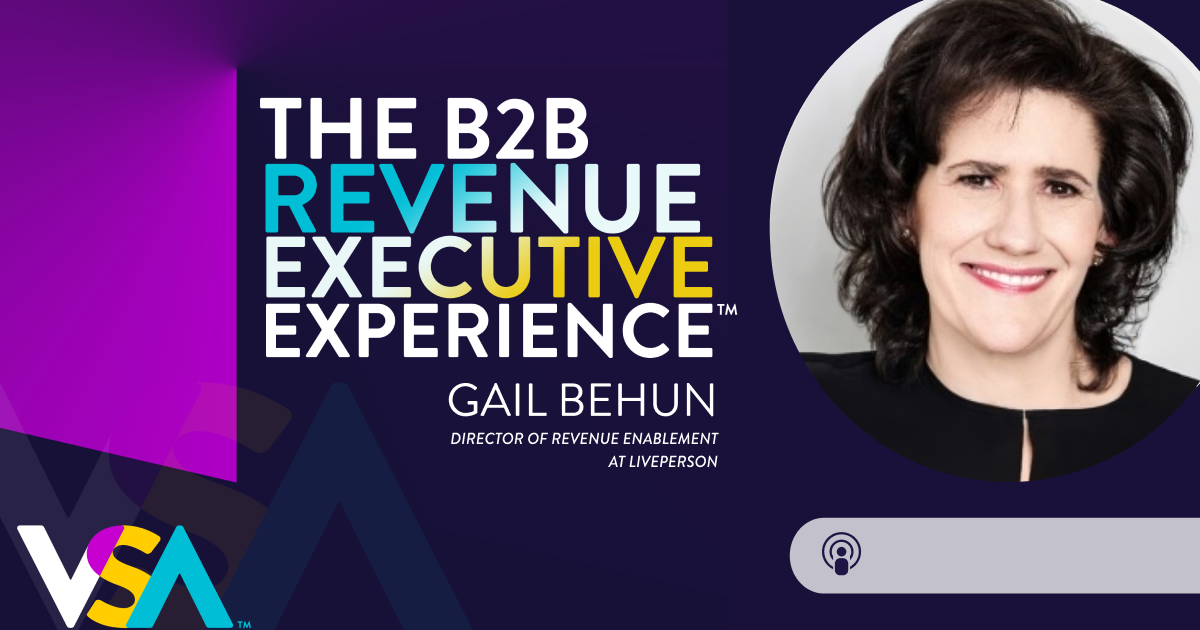The Difference Between a Sales Methodology and a Sales Process

There are those out there who don’t understand the difference between a sales process, a true framework, and more tactical types of training.
If you’re one of those people, you’ve come to the right place.
We recently interviewed Julie Thomas, CEO of ValueSelling Associates, about how sales methodologies fit into your organizations and how you as an individual contributor can leverage them to effectively increase your success.
Here’s a recap of what she shared.
Sales Methodology vs. Sales Process

Julie used an American football analogy to explain the difference between a sales process and a sales methodology.
In football, you’ve got yardage markers along a 100-yard field. You could be at the 50-yard line, the 20-yard line, or the end zone.
A sales process is analogous to that football field. It’s the answers to the following questions: “Where am I in the process of finding a prospect and getting that prospect to convert to a customer? Am I on the far side of the field, in the beginning of the process, or in the red zone, at the end?”
A sales process is typically an indicator that helps a sales manager look at an opportunity and say, “Where is it on this field?”
A sales methodology is actually the steps a sales rep would take to move something from the 50-yard line to the end zone. The ValueSelling framework is a methodology. It’s a “how-to” that teaches you to qualify and close those opportunities.
When we say framework, we mean a set of tools and processes that are interwoven together for the objective of reaching the end zone. One of the unique things about ValueSelling is that since it’s a methodology, it can align and integrate into any sales process. A sales process is just the definition of those steps.
Then sales skill training is the “blocking and tackling.” As a framework, ValueSelling can explain how to move an opportunity forward and the skills of what actually has to happen (e.g. how to open a sales call). In addition, it’s a tool that brings all of that together. All this makes it a very implementable solution.
Obviously, we’re biased, but in our opinion, it’s the most effective framework for understanding the buyer landscape as it’s changed in the last decade. There’s a reason that ValueSelling Associates have trained tens of thousands of students all over the globe.
Why Some Executives Fail at Implementing Methodologies
Sometimes ValueSelling clients get the results they want. Sometimes they don’t. It’s fair to ask: Why do sales executives tend to struggle with the implementation side of it?
Because that’s where the real work comes in.
Think about how hard it is to change adult behavior. Just look at the weight loss industry: there’s no silver bullet to losing weight. You eat less, and you move more. Yet it’s a multi-billion dollar industry where people pay lots of money to have others tell them to do those two simple things.
The same is true when you think about changing adult behavior in a sales organization. When ValueSelling Associates is brought in, they want salespeople to interact and engage their buyers in a different way. They teach them skills and work with them to build those habits, but human nature is working against them.
“Human behavior will always revert back to the steady state.'”
JULIE THOMAS,
CEO OF VALUESELLING ASSOCIATES
The companies that look at a methodology like ValueSelling as an event and expect things to truly change are setting themselves up for failure. Human behavior will always revert back to the steady state. The challenge with sales sometimes is that you could have a sales rep who is successful in spite of their skills and gets rewarded for doing the wrong thing.
The clients ValueSelling really embraces are the ones who recognize that the framework is something that takes time. The organization has to wrap its arms around the framework.
In order to transfer ownership to the leadership teams of clients, ValueSelling focuses specific training offerings on managers. What is your role in driving adoption? How do you coach it? How do you measure it and recognize success?
What is Most Effective When Someone is Trying to Sell to You?
We like to ask all of our podcast guests this question. Here’s how Julie responded:
“There are probably two things. First, there’s no replacement for timing. When someone reaches out to me at the point in time that I’m thinking about something . . . for example, I’m currently thinking, ‘Do we need to change our learning management system?’ That’s on my radar and my mind. I probably shouldn’t say this, but if somebody were to contact me from an LMS company, I’d probably be open to that conversation. The reality is, for most sales reps, the more activity they have, the higher the likelihood that they’re going to hit somebody at the right time.
“Beyond that, what interests me is somebody who gets me. Somebody who understands my business and has done a little work to predict what my challenges will be. I got a call yesterday from a recruiting firm. Well, if you look at my website, you know that my business model is such that a recruiter is probably not someone I’ll be interested in talking to.”
“I don’t have time to waste. Like any executive, I’m not sitting at my desk going, ‘Gosh, I really have nothing to do today. Wouldn’t it be great if a sales rep I don’t know selling something I don’t think I need called me right now?’ So it’s the messaging, the approach, and the timing, and showing that you can add value to them.”
Acceleration Insight
“It’s not what you know how to do. It’s what you actually do that makes a difference.'”
JULIE THOMAS,
CEO OF VALUESELLING ASSOCIATES
In each episode of the B2B Revenue Executive Experience, we ask our guests for one nugget of wisdom they would impart to a sales professional. Here’s this one:
“Years ago, I was in a management training class. The consultant working with us shared the text of a speech written by a gentleman named Albert Gray. At the time, in the late ‘40s, he was the country’s top life insurance salesman. He called his speech “The Common Denominator of Success.” In that speech, he defined the common denominator as this: The only difference between people that are successful and people that are not is that successful people make a habit of doing the things that unsuccessful people hate to do.
“Think about that: Successful people make it a habit to prospect every day. To rigorously, continuously qualify opportunities. To do the things that we all need to do, every day. It’s all about discipline and execution. It’s not what you know how to do. It’s what you actually do that makes a difference.”
This post is based on a podcast interview with Julie Thomas from ValueSelling Associates. To hear this episode, and many more like it, you can subscribe to the B2B Revenue Executive Experience.
If you don’t use iTunes, you can listen to every episode here.
Explore More









